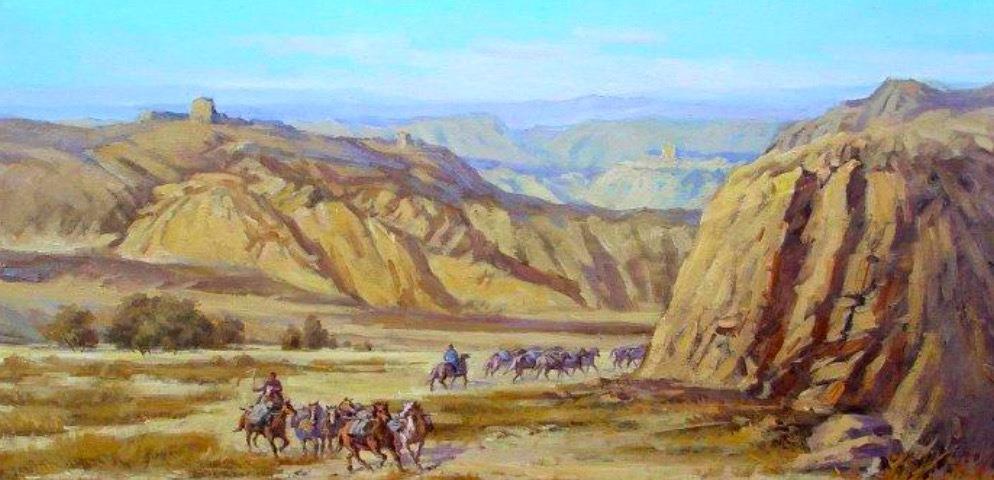Since the Manchu Qing Dynasty entered the customs, in addition to bringing a dowry, including part of the land north of the Heilongjiang River, especially through the recuperation and development of Kang Yongqian III, by the Qianlong Dynasty, the national population exceeded the 300 million mark. However, due to the serious lag in the development of industry and commerce and the closure of the national gate, most of the Chinese people are still facing the agricultural population with their backs to the sky on the loess soil, so the rapid increase in population has led to the contradiction between man and land becoming prominent, and the poor people in the interior have no choice but to leave their hometowns in the background and run away from their homeland in order to survive, so there are such population migration activities as going west, breaking into the Guandong, and going down to Nanyang.

In fact, in the Qing Dynasty, the great migration of the population did not only go to the west entrance, break into the Guandong, go down to the South Sea, etc. so many times, but only because of the preservation of this memory in recent literary and artistic works, such as the existence of the song "Walking west", the TV series "Breaking into the Guandong", etc., constantly awaken people's memories of these historical events. Today's article will talk about the population migration that everyone is familiar with, in addition to the well-known population migration of the West Exit, the Kanto, and the South China Sea, there are other population migrations.
1. Fill in Sichuan
Sichuan is currently a province with a large population of more than 83 million, but in the Kangxi Dynasty, due to the continuous war and the great plague from the Ming Dynasty to the early Qing Dynasty, the population was only more than 90,000 people. At that time, as soon as the officials sent by the Qing court to Sichuan arrived in Sichuan and found that the legendary "Kingdom of Tianfu" was such a fallen figure, Zhang De, who was then the governor of Sichuan, drafted a note to the Kangxi Emperor, asking the provinces to immigrate to Sichuan. After some research between the Kangxi Emperor and the officials of the imperial court, he officially issued an edict entitled "Kangxi Thirty-Three Years of Recruiting People to Fill in Sichuan", ordering large-scale immigration to Sichuan from Hunan, Hubei, Guangdong and other places.
Therefore, there is a saying that "the lake fills Sichuan".
Due to the series of preferential measures adopted by the central to local governments at all levels to attract immigrants from other places to settle in Sichuan, Huguanghang Province has the largest population. According to the Historical Records of the Qing Dynasty, "the people of Chengdu today are all from other provinces": among them, 15% of Hubei, 10% of Hunan, 5% of Henan and Shandong, 10% of Shaanxi, 15% of Yunnan and Guizhou, 15% of Jiangxi, 5% of Anhui, 10% of Jiangsu and Zhejiang, 10% of Guangdong and Guangxi, and 5% of Fujian, Shanxi and Gansu.
After the hard work of immigrants from all over the world, Sichuan has slowly regained its reputation as the "Country of Heavenly Capital".
2. The Ancient Trail
The Trail is not an officially organized migration activity, it is entirely spontaneous.
The Ancient Trail was promoted by the spontaneous commercial activities of Shaanxi merchants, some people call it the "Southwest Silk Road", which was formed by Shaanxi merchants and the tea and horse markets of the ancient southwest frontier. During the Ming Dynasty, millions of catties of tea were trafficked (from southern Shaanxi to Kangding in Sichuan and Tengchong in Yunnan), and tens of millions of tons were trafficked during the Qing Dynasty.
Therefore, the Shaanxi people who wade through the ancient road went to Zangkangdian and other places to set up camps, settled down to do business, and became local Shaanxi merchants.
3. Expanding the North Court
Tuobeiting, like the Ancient Trail, was also the earliest immigration activity that arose from the commercial activities of private merchants. It is the merchants who reached the Hexi Corridor through the Shaanxi-Gansu Tea Horse Ancient Road and passed through Yumen Pass and Yangguan to Xinjiang to engage in commercial and immigration activities.
Immigration to Xinjiang can be traced back to the Han and Tang Dynasties, to the Qing Dynasty is to increase the intensity of immigration to Xinjiang, became the official will, the Qing Dynasty to the immigration to Xinjiang adopted the implementation of the policy of "immigrants under the real plug", garrison reclamation, a large number of soldiers, farmers, merchants, etc. came to Xinjiang and stayed in life, by the Qing Dynasty, the Han people have spread all over Xinjiang, the main population from Shaanxi, Shanxi, Hunan, Tianjin, Hubei, Henan, Sichuan, Guangdong, Guangxi, Fujian and other places.
In the modern history of population migration in China, the reasons for population migration are diverse, the most direct causes of which are migration branches, wars and natural disasters. Historically, whenever there was a war or famine in the northern part of our country, it would cause a large-scale population migration to the south.
In the Qing Dynasty, there were several major population migrations, in addition to breaking into the Guandong and going west to the South China Sea, there were also filling Sichuan, the ancient road, and the Tuobei Garden. After reading this article, do you know now?